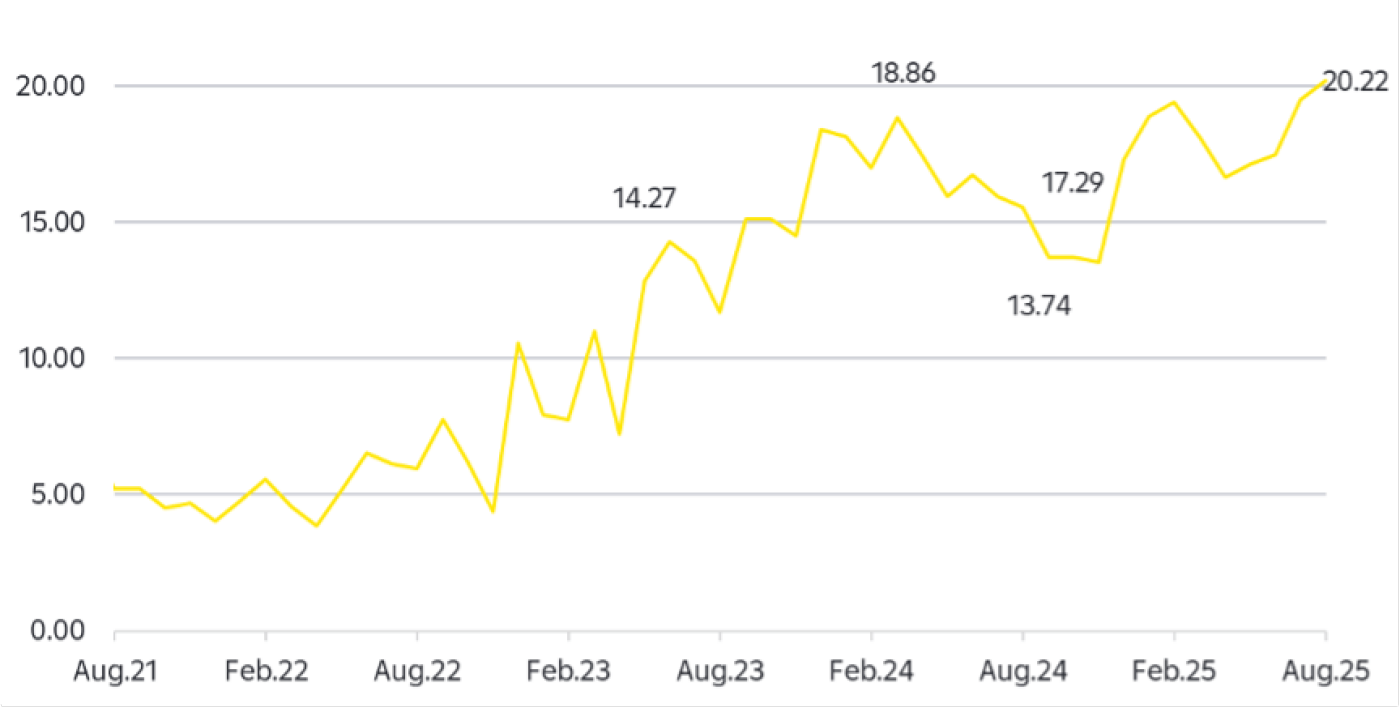
Raiffeisen Bank Bosnia and Herzegovina – 25 Years of Resilience, Growth, and Partnership
The financial sector in Bosnia and Herzegovina has shown strong resilience and adaptability. Understanding the current economic climate is crucial for assessing its impact on the banking industry. This overview outlines key performance indicators, challenges, and opportunities for the region's financial future.
Can you provide a brief overview of the current economic climate in Bosnia and Herzegovina and its impact on the financial sector?
The banking sector in Bosnia and Herzegovina has once again proven its resilience. Throughout 2024 and into the first half of 2025, banks achieved record performance across key financial indicators—despite facing growing economic headwinds.
Bosnia and Herzegovina closed 2024 with solid GDP growth of 3.0% YoY, supported by stable public spending and domestic demand. Yet, the first half of 2025 brought signs of slowing momentum, with GDP growth moderating to 1.8% YoY, amid higher inflation (3.6%) and weaker investor confidence. While IT, tourism, and professional services remained vibrant, traditional industries such as manufacturing and energy came under pressure.
Amidst this backdrop, the banking sector remained a pillar of stability. Total loans expanded from EUR 13.2 billion at end-2024 to EUR 13.98 billion by mid-2025—a 10.2% annual growth rate, led by robust retail demand (+10.5%) and solid corporate growth (+8.2%). Deposits followed suit, rising to EUR 17.65 billion, an increase of 7.9%.
Profitability stayed strong: banks posted EUR 229.5 million net profit in H1 2025, with ROA at 2.2% and ROE at 15.7%. Asset quality also improved—NPL ratios dropped to a record low of 2.9%, underscoring prudent risk management.
Looking ahead, the sector is expected to sustain growth with projected loan expansion of 9.8% and deposit growth of 8.0% for 2025, reaffirming its role as a stabilizing force and trusted neighbour in Bosnia’s economy.
What are the biggest challenges facing the financial sector of Bosnia and Herzegovina, and how is Raiffeisen Bank adapting to them?
A key structural challenge remains Bosnia and Herzegovina’s fragmented regulatory framework, divided between the Federation of BiH and Republika Srpska. This dual system complicates harmonized financial reforms and limits cross-entity coordination.
Despite this, Raiffeisen Bank Bosnia and Herzegovina continues to thrive—drawing on its regional expertise, robust compliance structure, and 25-year tradition of stability.
The market hosts 21 active banks, balancing price competition with growing investment in digital innovation. Yet, digital transformation progresses unevenly, smaller banks face legacy IT systems, and cybersecurity remains a sector-wide challenge.
Raiffeisen Bank continues to lead the digital agenda, investing in infrastructure, mobile solutions, and customer experience to maintain its position as a trusted financial innovator and Good Neighbour—bridging traditional banking with modern, client-centric services.
What are the most promising opportunities in Bosnia and Herzegovina right now?
The ongoing growth in loan demand across both retail and corporate segments represents a clear opportunity for expansion. Steady deposit inflows ensure liquidity, while ESG-focused and green finance initiatives are opening new horizons for sustainable banking.
The EU’s Growth Plan for the Western Balkans provides additional potential, particularly in financing infrastructure, energy transition, and competitiveness-enhancing investments.
As Bosnia and Herzegovina advances on its EU integration path, banks will play a vital role in mobilizing capital. They will also support renewable energy and decarbonization projects, driving sustainable growth.
How is the financial industry in Bosnia and Herzegovina addressing sustainability and ESG (Environmental, Social, and Governance) factors?
ESG integration in Bosnia and Herzegovina is still emerging but accelerating. Alignment with EU and ECB frameworks is underway, creating new demands—and opportunities—for the banking sector.
Local companies, especially SMEs, face challenges such as limited resources and expertise in ESG compliance. Here, banks are becoming catalysts for change, helping clients transition toward greener, more sustainable business models.
Raiffeisen Bank plays an active role in this transformation, especially within the microcredit sector—sharing expertise, providing advisory support, and promoting ESG awareness in line with the Guidelines for Managing Climate-Related and Environmental Risks.
This commitment reflects our broader purpose: to foster responsible growth and help communities thrive—just as we have for 25 years as a Good Neighbour.

What trends are you observing in client preferences and demands within the financial sector of Bosnia and Herzegovina?
Client preferences are shifting rapidly. Demand for digital banking, remote onboarding, and mobile services continues to rise, particularly among younger and urban populations seeking speed and convenience.
At the same time, a segment of clients—especially in rural or less digitally connected regions—still values personal relationships and branch-based services.
This duality reinforces the importance of hybrid banking models, where digital innovation coexists with personalized, human-centred service—something Raiffeisen Bank has been perfecting throughout its 25 years of being a Good Neighbour to every customer.
What are your top strategic priorities for the coming year?
As we celebrate our 25th anniversary, we look back with pride on a quarter-century of building trust, fostering progress, and standing by our clients through every challenge. This milestone strengthens our resolve to continue leading responsibly and innovatively.
Looking ahead, our strategic priorities focus on:
- Expanding our microfinance portfolio, unlocking new access to credit for more than 170,000 clients currently outside the traditional banking system.
- Accelerating ESG and green finance initiatives to support sustainable projects.
- Deepening digitalization, improving infrastructure, and enhancing cybersecurity.
- Diversifying the client base by engaging insurance companies and financial institutions.
We also see strong potential in correspondent banking and trade finance, enabling cross-border connectivity for Bosnian businesses. As always, cooperation with Risk will remain key to safeguarding quality and compliance while we grow.
What is your outlook for the financial sector of Bosnia and Herzegovina over the next five years?
The outlook remains positive and stable. For 2025, loan growth is projected at 9.8% YoY and deposits at 8% YoY, with steady growth expected through 2030.
Strong capitalization, prudent regulation, and ongoing digitalization will keep the sector robust and adaptable.
With continuous innovation and the commitment of institutions like Raiffeisen, the financial system will continue to serve as a cornerstone of Bosnia and Herzegovina’s long-term prosperity—a true partner in progress and Good Neighbour to the economy.
Comment on the increase of the Raiffeisen Bank market share in the Financial Institutions segment

Raiffeisen Bank has achieved exceptional growth in the Financial Institutions (FI) segment. The Bank has expanded from a 5% market share in 2021 to over 20% by August 2025—a fourfold increase in just four years.
After steady early growth, momentum accelerated from late 2022, reaching 14.3% in early 2023, and peaking at 20.2% in mid-2025. This journey reflects our strategic agility, deep client relationships, and strong execution.
Even amid temporary volatility in 2024, Raiffeisen Bank demonstrated resilience and swift recovery—hallmarks of a Good Neighbour bank with a long-term vision and strong fundamentals.